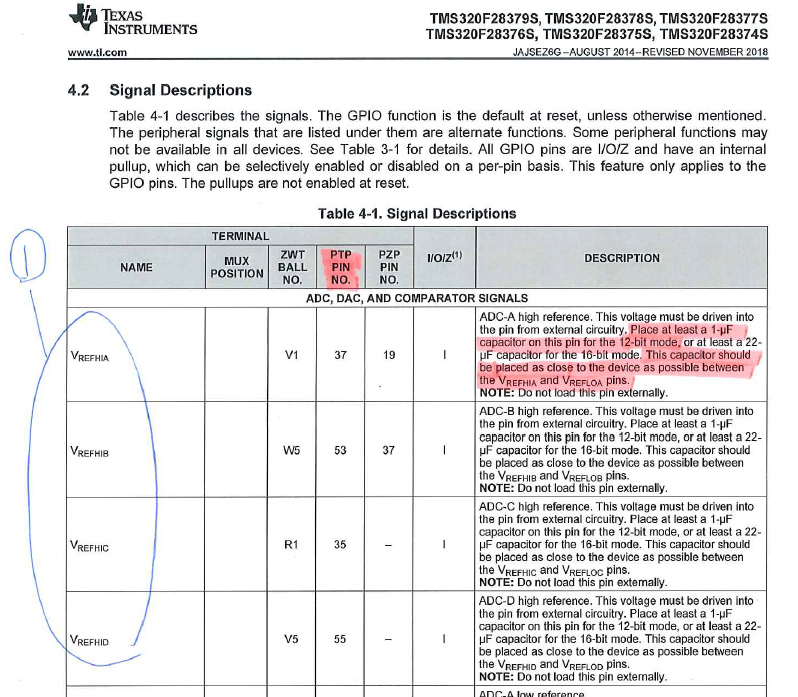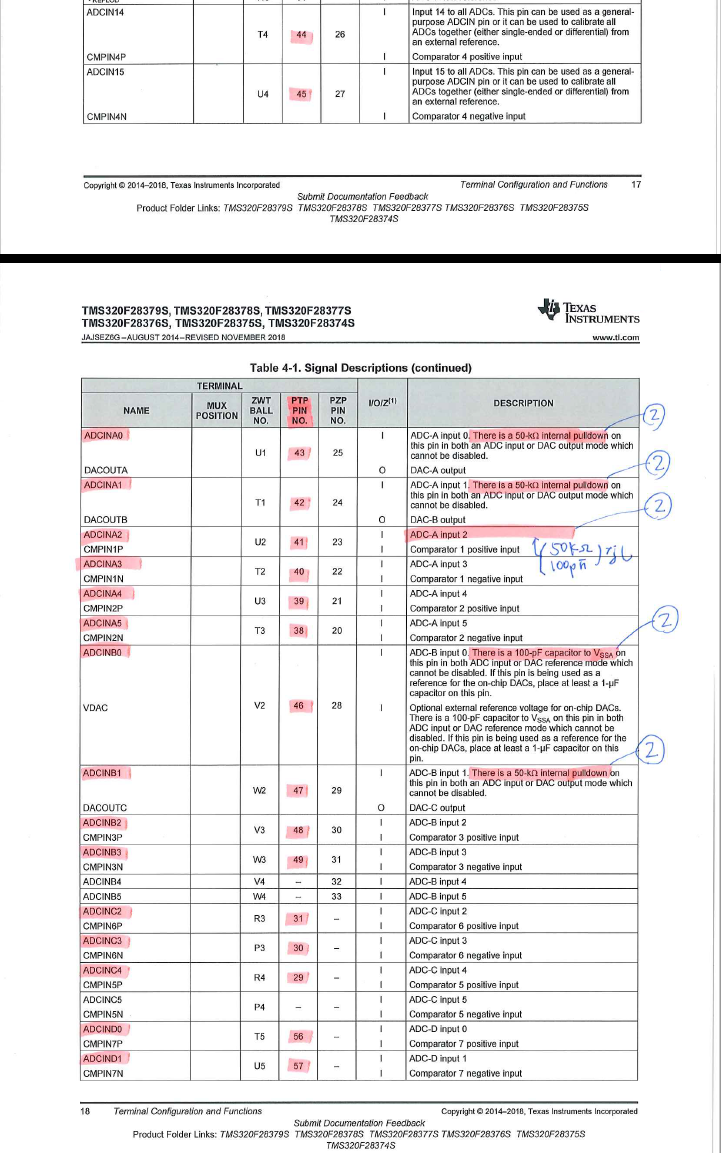I have 2 questions related to internal ADC.
Q1. This question is for biasing at VREFHIA to VREFHID pins.
Is it work well to bias the pins by 3V power source directly as AVDDREFBG pin of F2812?
P.1464 and P.1465 of the technical reference of F28377S, spruhx5g.pdf describes
that those pins are biased by buffered reference voltage,
but. I want to reduce the external reference ICs and buffers, if possible.
This is the background of this question.
I also referred the following table in P.17 of datasheet. This is just information.
[cid:image001.png@01D5CBCA.D2014AB0]
Q2. This question is for ADC input pins.
Some of ADCINxx pins, which are marked in the following table in page.17
and 18 of datasheet, has 50kohm pull-down or 100pF cap. PLS also refer
the following table.
How should the effect by the internal resistor and the cap be estimated related with ADC input pin without such internal constant?
What is the reason why the internal constants are added?
[cid:image002.png@01D5CBCC.41418EC0]
Best Regards,



